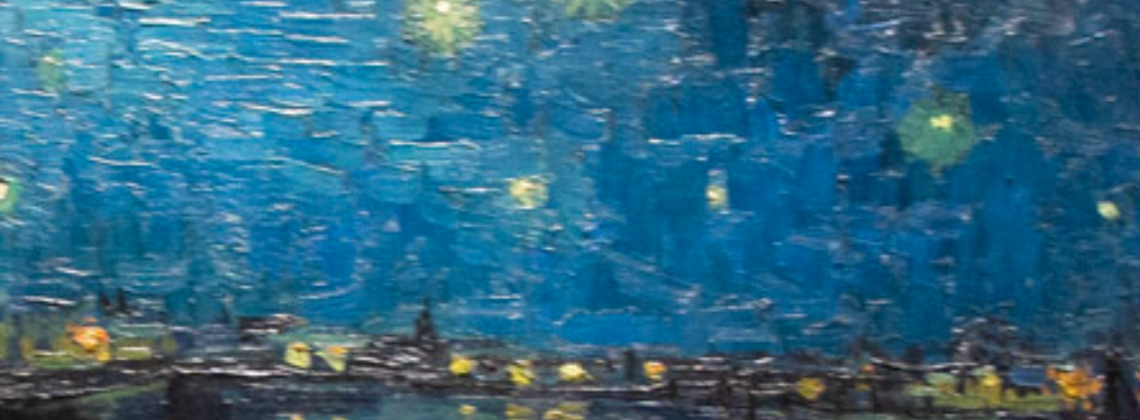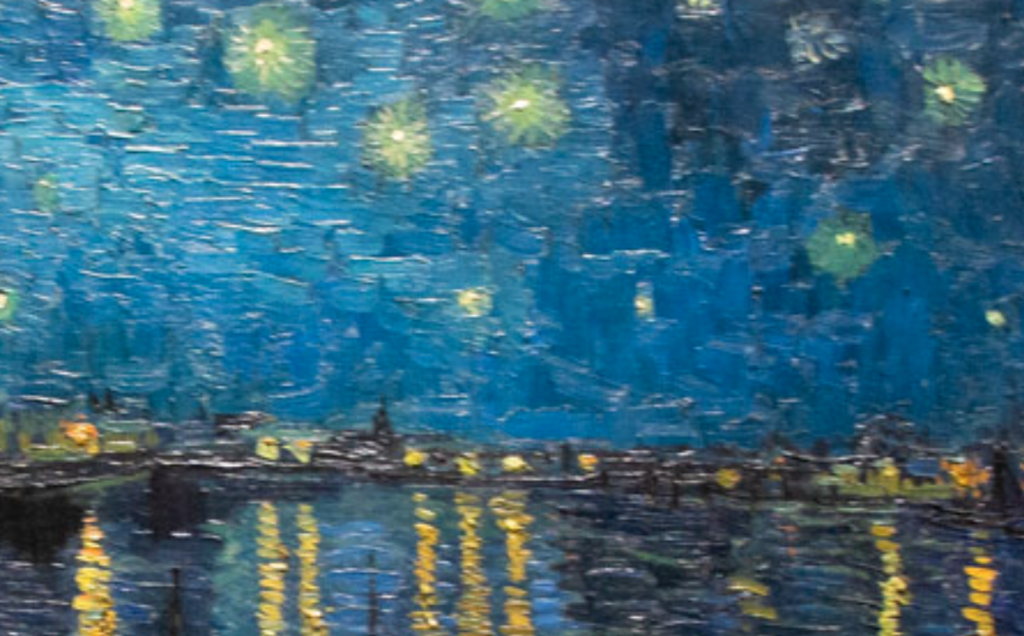

What does it mean to be alive?
Van Gogh Has a Broken Heart: What Art Teaches Us About the Wonder and Struggle of Being Alive by Russ Ramsey. Zondervan Reflective, 2024. 256 pp., $29.99
There are no Nativity paintings in Russ Ramsey’s latest book, but it is a welcome and gentle companion to the Advent season. In the Christian liturgical calendar, Advent is a doubled season of waiting and preparation. We both recall Christ’s birth, which fulfilled the long-awaited promise of a Rescuer, and we look forward to his Second Coming. Like God’s people of old—who yearned and lamented through bondage, war, exile, and occupation—we acknowledge all that still wounds us and weighs us down, even as we cling to our certain hope.
How do we do this well? In Van Gogh has a Broken Heart: What Art Teaches Us About the Wonder and Struggle of Being Alive, pastor and author Russ Ramsey suggests that visual art can help us hold both brutal griefs and transcendent beauty.
Like his first book on art (Rembrandt is in the Wind: Learning to Love Art Through the Eyes of Faith), Ramsey’s latest offering is a collection of stories about artworks and the people who made or loved them. All the stories are beautiful, and most of them are sad.
Sometimes this sorrow comes from the story that the art tells. Gustave Doré’s The Burial of Sarah, for example, compresses Abraham and Sarah’s lifetime of shared hope and heartache into a single, haunting etching. In other instances, it’s the story of what happened to an artwork that pricks us. Rather than spinning the 1911 theft of Leonardo da Vinci’s Mona Lisa into a detective’s tale, Ramsey invites us to recognize our own desire to own the unattainable. But most often he tells us artists’ stories, marveling at how humans with such foibles, anxieties, traumas, and afflictions could paint canvases that make our hearts stutter and skip.
Ramsey approaches art with his feet firmly planted in pastoral ministry. He has studied these particular artworks and artists not because they are the best or most important or suit a political agenda but because they are part of what he calls his “personal collection.” These are the artworks he carries with him—objects and artists who have met him, changed him, and sustained him at different moments in his life. To this end, his writing is careful, evocative, and gentle. He talks about artists as if they are his friends and parishioners; he wants to shepherd their stories well.
Sometimes that can rub against my sensibilities and training as an art historian. When he writes about Albert Bierstadt and nineteenth century American landscape painting, for example, my impulse is to put Ramsey’s explanation of the Romantic “sublime” in conversation with some additional contexts like the challenge of Darwinism or the commodification of the West. But this is a book that clearly sets out to cultivate our love for art, not tell us everything there is to know about it.
Ramsey has an ear for hearing the story within a history. He met with me when he was just starting to learn more about Artemisia Gentileschi, the seventeenth-century painter best known today for her violently gory paintings of Judith Beheading Holofernes and her own experience of sexual assault. While I rambled on and on about the hierarchy of painting and feminist historiography and Counter-Reformation theology, Ramsey picked out the humanizing narrative. What happens if we let Gentileschi be human—ambitious and aching, complicit and contrary— instead of forcing her to be a hero?
This humanizing imagination allows Ramsey to both call out his beloved Rembrandt’s selfishness and grieve with him over his profound losses. He wonders if the man who stole the Mona Lisa ever sat and just enjoyed looking at the painting. He gently chides us for making jokes about Van Gogh’s infamous, sliced ear. In our present reactionary culture, Ramsey’s generous curiosity is a valuable model and corrective.
Indeed, some of his strongest chapters consider how artists’ practices changed over time. Sometimes the causes of a stylistic shift—like J.M.W. Turner’s move towards abstraction—remain unknown to historians. But Ramsey mines the mystery, finding a consonance between Turner’s rejection of his earlier academic style and the questions driving the current phenomenon of deconstruction. Despite this artistic pivot and the seeming formal contradictions, Turner wanted his entire body of work to be kept together. Can we do the same? Likewise, Ramsey’s chapter on Norman Rockwell focuses on a lesser-known painting towards the end of the renowned illustrator’s career. After decades of painting puppies and lemonade stands and young love, Rockwell depicts a horrific moment of racial violence with moral clarity. While many biographers gloss over this late-in-life shift, Ramsey values it. “Long to know the story,” he writes, “and as you learn it, tell the truth.”
In addition to ten story-driven chapters, Ramsey includes a helpful discussion guide and three appendices. The additional texts—a meditation on personal taste, an index of traditional symbolism in art, and a list of lost, stolen, and recovered art—may seem like odd, disconnected additions. But they reflect Ramsey’s ongoing, developing interest in different aspects of western art and they suggest a variety of on-ramps for new enthusiasts to explore.
Every semester, I begin my Introduction to Art History class by warning students that my goal is to make them fall in love. They may very well end the semester without a romantic partner, but I want them to be utterly, irrevocably enthralled . . . by art itself. Ramsey’s aim is the same. While many casual visitors to art museums might be looking for some kind of escape, Ramsey argues that artworks’ engagement with grief and brokenness is what invites us to live our lives more fully. He knows that artworks can serve as guides and mirrors, pointing us to richer, more complicated ways of being in the world while also echoing back our own longings and hopes.
Beauty, Ramsey writes, is both scarce and everywhere. Learning to be curious about art and artists may not make us connoisseurs of Art-with-a-capital-A, but it should expand our capacity to hold the wonder and struggle of simply being alive. That is a gift for any time of the year, but especially for the Advent season.
Elissa Yukiko Weichbrodt is Associate Professor of Art and Art History at Covenant College in Lookout Mountain, Georgia, and she is the author of Redeeming Vision: A Christian Guide to Looking at and Learning from Art (Baker Academic, 2023). She is a Contributing Editor for Current.
Image: Van Gogh, “Starry Night,” Musee d’Orsay, Paris